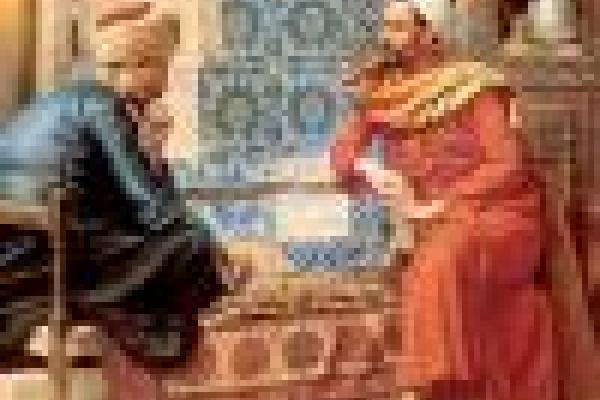Article
Article

Squeeze me, stretch me
Did you know that every instant, gravity waves from outer space are stretching and squeezing you - and everyone and everything else in the universe? Learning more about this mysterious radiation will help us to probe the structure and origins of the universe, explains Anita Barnes.
Article


The UK National Lottery - a guide for beginners
In the early days of the UK National Lottery, it was quite common to see newspaper articles that looked back on what numbers had recently been drawn, and attempted to identify certain numbers as "due" or "hot". Few such articles appear now, and John Haigh thinks that perhaps the publicity surrounding the lottery has enhanced the nation's numeracy.
Article

101 uses of a quadratic equation
It isn't often that a mathematical equation makes the national press, far less popular radio, or most astonishingly of all, is the subject of a debate in the UK parliament. However, as Chris Budd and Chris Sangwin tell us, in 2003 the good old quadratic equation, which we all learned about in school, reached these dizzy pinnacles of fame.
Article

Outer space: Wagons Roll
The concept of a speed limit seems a simple one - until you think what can happen when a speed camera clocks a rotating wheel...
Article
Article

Pools of blood
A biologist has developed a blood test for detecting a certain minor abnormality in infants. Obviously if you have blood samples from 100 children, you could find out which children are affected by running 100 separate tests. But mathematicians are never satisfied by the obvious answer. Keith Ball uses information theory to explain how to cut down the number of tests significantly, by
pooling samples of blood.
Article
Editorial
- Beaglemania - The Beagle is missing in action, but it is inspiring a new generation of would-be astronauts.
- Careers with Maths - Plus has been given a grant to produce posters based on our popular careers library.
Article

Practice makes perfect
In 1997 Garry Kasparov, then World Champion, lost an entire chess match to the IBM supercomputer Deep Blue, and it is only a matter of time before the machines become absolutely unbeatable. But the human brain, as Lewis Dartnell explains, is still able to put up a good fight by exploiting computers' weaknesses.
Article

Making the grade: Part II
Calculus is a collection of tools, such as differentiation and integration, for solving problems in mathematics which involve "rates of change" and "areas". In the second of two articles aimed specially at students meeting calculus for the first time, Chris Sangwin tells us how to move on from first principles to differentiation as we know and love it!
Article

The music of the primes
Following on from his article 'The prime number lottery' in last issue of Plus, Marcus du Sautoy continues his exploration of the greatest unsolved problem of mathematics: The Riemann Hypothesis.
Puzzle


You label my back; I'll label yours
Can you guess how everyone else has you labelled?